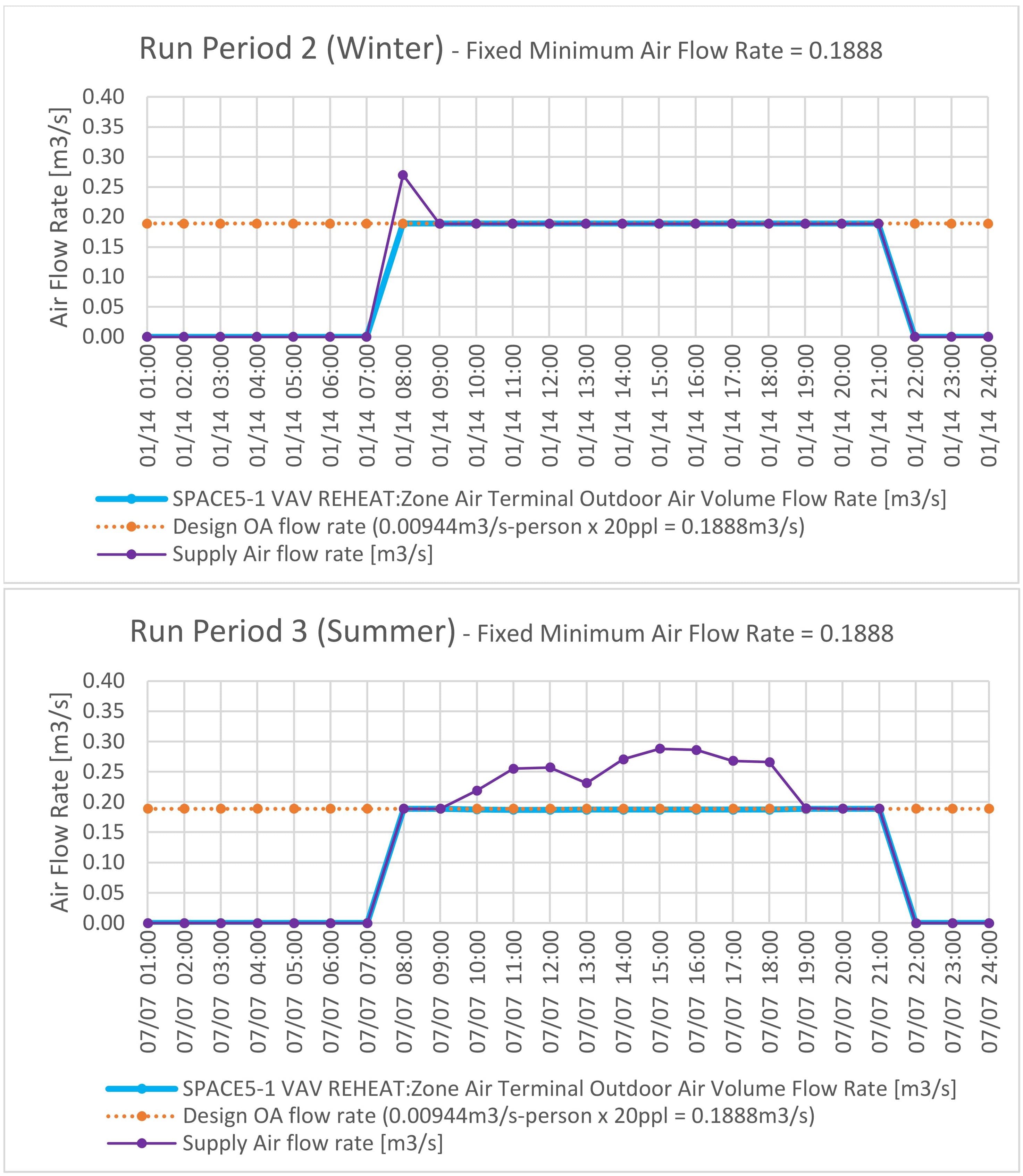How can HVACTemplate:Zone:VAV ensure Minimum OA Flow Rate?
Any model is fine, but let me explain the current issue by using an ExampleFile in E+ v9-4-0 for simplicity.
This idf file is a slightly revised version of HVACTemplate-5ZoneVAVFanPowered.idf from ExampleFiles. Originally there were 5 zones, but I deleted 4 HVACTemplate:Zone:VAV:FanPowered because they worked fine. Now there is only one zone (SPACE5-1) with HVACTemplate:Zone:VAV and HVACTemplate:System:VAV. I want to focus on them.
Besides, I added Zone Air Terminal Outdoor Air Volume Flow Rate in Output:Variable, and just ran the simulation. I got the results for 2 days in winter and summer. The charts below show outdoor air flow rate.

I don't know why the actual outdoor air flow rate is not constant and below the design outdoor air flow rate.
In HVACTemplate:Zone:VAV, Outdoor Air Method is flow/person and the value is fixed to 0.00944 m3/s per person. In People, Number of People is fixed to 20, so I think the outdoor air flow rate should be constant at 0.00944 x 20 = 0.1888m3/s (the orange dashed lines in the charts). But the actual outdoor air flow rate is quite different from 0.1888m3/s, especially when heating.
At first, Minimum Outdoor Air Flow Rate in HVACTemplate:System:VAV was set to autosize, so I changed it to the exact value 0.1888, but in vain.
Economizer Type is set to DifferentialDryBulb in HVACTemplate:System:VAV, but even when I changed it to NoEconomizer, the result didn't change.
Minimum Outdoor Air Control Type is set to FixedMinimum, and the fraction of Minimum Outdoor Air Schedule is 1 from 9:00 to 21:00, so there seems to be nothing strange about it. When I tried changing this control type to ProportionalMinimum, The outdoor air flow rate further decreased (see the charts below). The change in outdoor airflow rate by time does not seem to correspond to the occupancy schedule either.

People has an occupancy schedule with different fractions for different time zones, but I believe that flow/person for Outdoor Air Method is not affected by occupancy schedule.
Constant Minimum Air Flow Fraction is set to 0.3. When I tried changing this fraction to 1, the outside airflow rate became constant, but the supply airflow rate also became constant (see the charts below). This is not what I expect. This is not VAV, but CAV. I want to keep outdoor airflow rate, and I want supply airflow rate to vary according to cooling/heating load.

I know that acrording to Engineering Reference, VAV doesn't work as VAV when heating (although I'm not convinced why this is the default setting). But is there any way to keep minimum outdoor air flow rate as I want? 
For your reference, below is the input for HVACTemplate:Zone:VAV and HVACTemplate:System:VAV.
HVACTemplate:Zone:VAV,
SPACE5-1, !- Zone Name
VAV Sys 1, !- Template VAV System Name
All Zones, !- Template Thermostat Name
autosize, !- Supply ...





